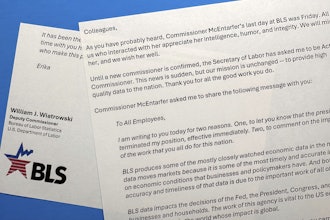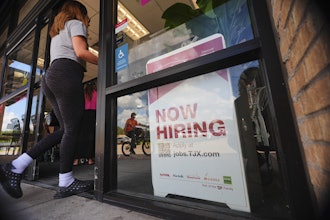As unemployment hovers below 4 percent, many manufacturers are addressing a tightening labor market through freelance or contract employees. These independent workers, who now account for nearly a third of today’s workforce, offer a level of flexibility and on-demand availability companies need to fill positions during peak demands.
Freelance employees are more than a quick fix to a temporary problem. They can be cultivated, trained and hired on demand for specific manufacturing skills, including maintenance and support for older equipment still in use on the factory floor or in the field.
However, this bank of temporary resources can come at a cost. Without careful planning, manufacturers might unintentionally hire workers who can damage product quality and customer loyalty. Their sporadic availability makes it challenging to schedule and keep them current with the latest company training and procedures.
Let’s say a company assigns 30 percent of its work to freelancers. How do they match resources to demand? What skills will the freelancers provide and how can these skills be adapted to meet new changes in production? How can they ensure their freelance workforce will adhere to quality standards or even consistently show up to work on time?
Recent surveys reveal 85 percent of organizations struggle to forecast capacity and skills mix needs while more than 60 percent are challenged to govern their resource management processes and manage their inventory of skilled workers. If not handled properly, freelance workers can further complicate this matter.
Over the last couple of years, rideshare companies like Uber and Lyft have uncovered new ways to build a consistent and reliable workforce through the freelance economy. Their best practices can be applied to manufacturing roles as part of a new kind of workforce planning model.
A workforce-planning model is something every company needs to help forecast future capacity needs for resources. Having freelance employees and budgets ready is something every company should plan for months before they need the resources. Here are five ways to develop a workforce-planning model supporting hardware maintenance services that makes the most of a growing independent freelance skills base.
1. Start With Creating A Database Of Freelance Workers
If you look at Uber or Lyft, all prospective drivers must start with an online application. The same approach can be applied to almost any job. But for manufacturing, it’s important to include experience with specific equipment and technology, certifications, references, availability and best means of contact.
All of these data points must be cross-referenced in the workforce planning model in advance of vacation periods, product launches or seasonal pushes. Multiple software products to house a skills database are available to help create a list of suitable resources and simplify the search when resources are needed. Software to connect and dispatch skilled resources to locations with hardware ‘incidents’ or failures can often serve a dual role of both housing the skills database and support the dispatching of technicians.
2. Consider Reaching Out To Retired Workers
Companies are often hesitant to replace older, legacy equipment for fear of interrupting production. Likewise, older equipment like the 400,000 ATMs and 100,000 pay phones in the U.S. continue to require maintenance and repair.
It’s difficult to find workers who are willing to be trained on equipment that might disappear in a few short years. However, there are still thousands of recently retired workers who are more than happy to reconnect with the equipment they spent years working on.
Baby Boomers, born between 1946 and 1964, are retiring at a rate of 10,000 a day. Many are behind the wheel of an Uber or Lyft car. Likewise, many retired manufacturing employees are willing and able to continue working alongside younger employees on a part-time or contract basis.
3. Forecast Work — MTTF, Vacations, Product Launches And Seasonal Events
Perhaps the most important and often overlooked component of a good freelancing workforce strategy is the need to develop better precision in forecasting future demand for service workers. This is also true for use of traditional employee-based workforces. After all, developing human capital capacity and capabilities takes time and planning which often is done in cycles of months.
After building and populating a skills database, resource managers can begin forecasting needs based on vacation and holiday seasons, new product initiatives and anticipated product or equipment failures.
It’s common practice to factor in a Mean Time to Failure Rate (MTTF) when designing products. Manufacturers, therefore, know when to expect increased demands for repair or replacements. With that knowledge in hand, they can determine when and where they’ll need freelance employees the most.
4. Communicate Availabilities And Schedules
The rideshare companies are tremendously successful with tools and applications that enable them to schedule drivers based on the time of day or week in conjunction with events around any given city. Manufacturers can do the same with freelance workers who are willing to plan months ahead and build out their schedules to take advantage of peak demands. Better planning for availability also opens the door for companies to construct ‘premium’ service plans whereby a premium is paid by the customer for a promise of more timely service vs. a service level standard that typically exist for hardware products.
5. Retain, Reuse And Develop The Best
Just as rideshare drivers are rated for their performance, so can freelance technicians for manufacturing companies. Through these evaluations, manufacturers can decide how to schedule work with the best employees and identify who receives additional training and development.
The freelance labor market is full of highly skilled professionals who choose work/life balance and flexibility over full-time jobs. If managed and appropriately valued, they can provide long-term contributions that help manufacturers maintain production, service products and keep their customers happy.
Randy Mysliviec, Director of the Resource Management Institute.























